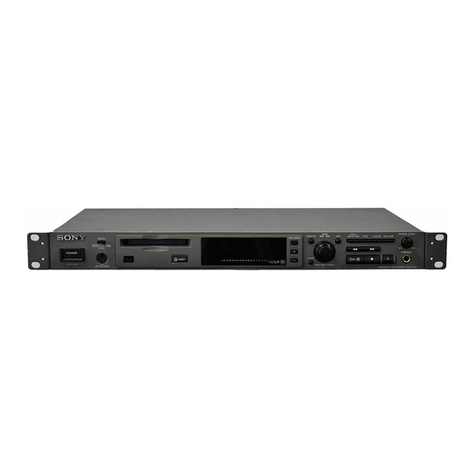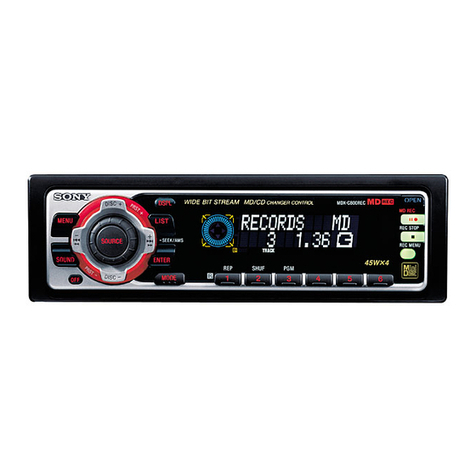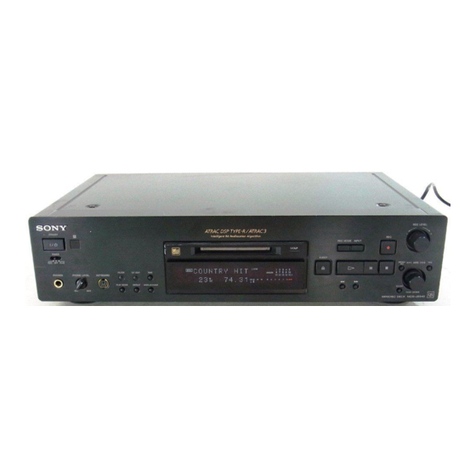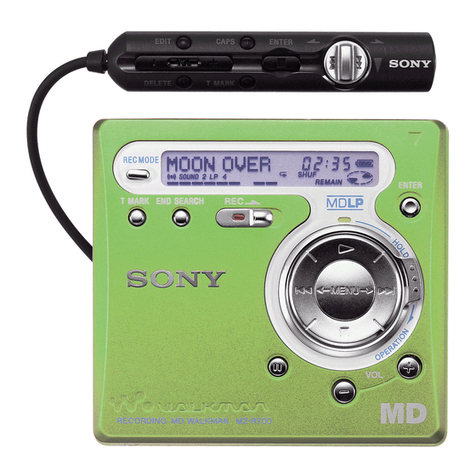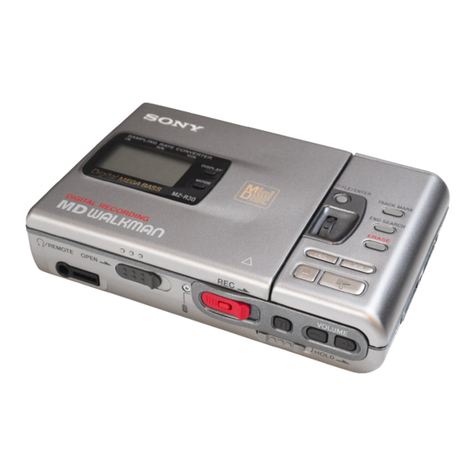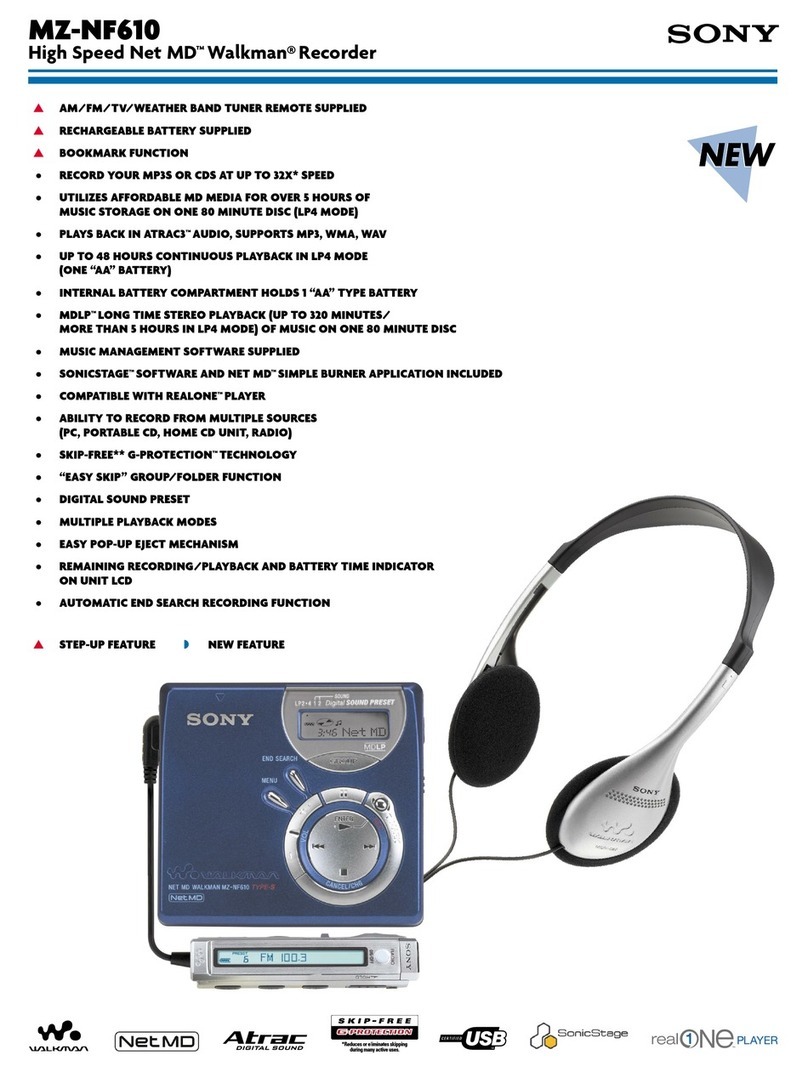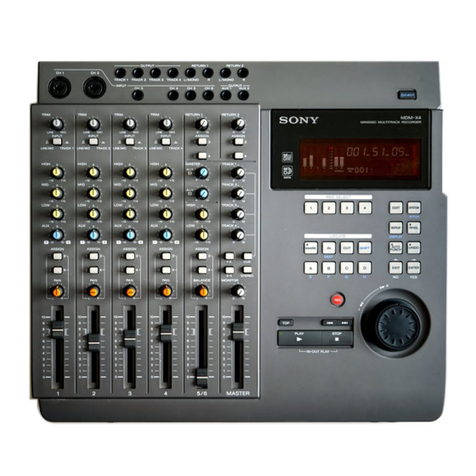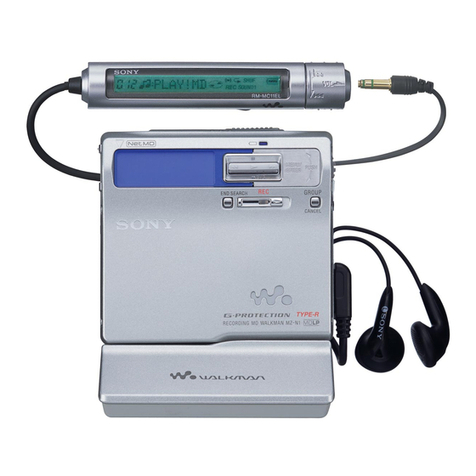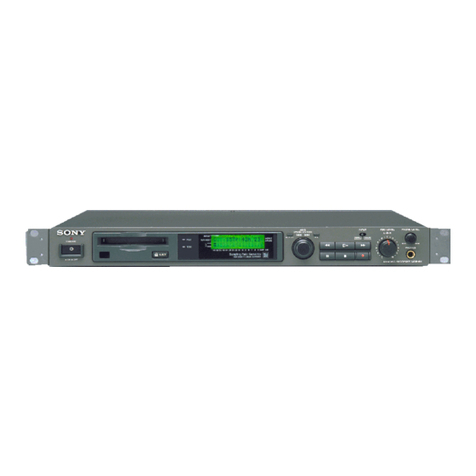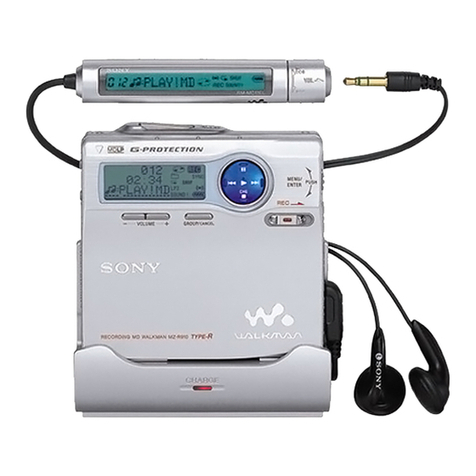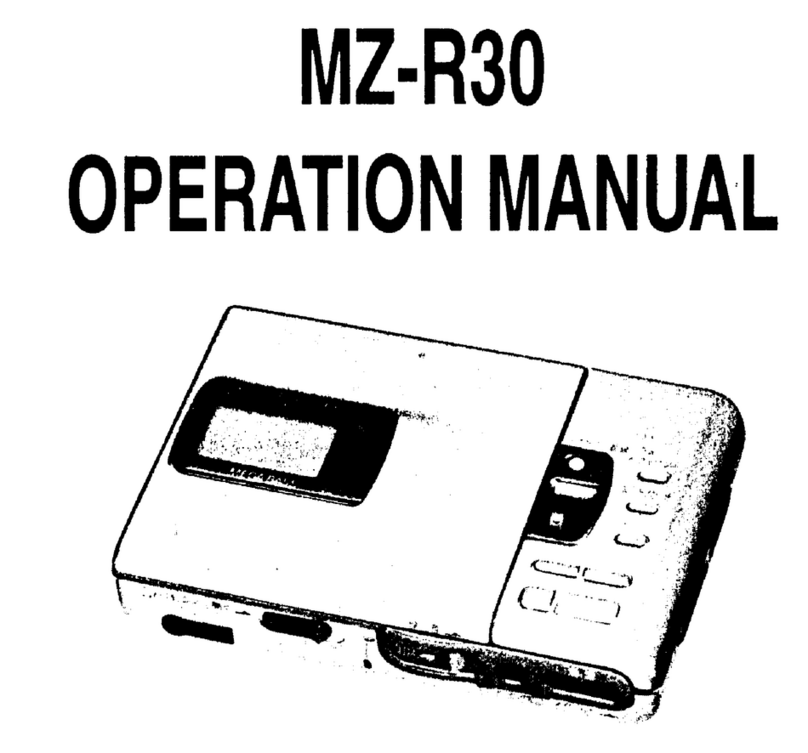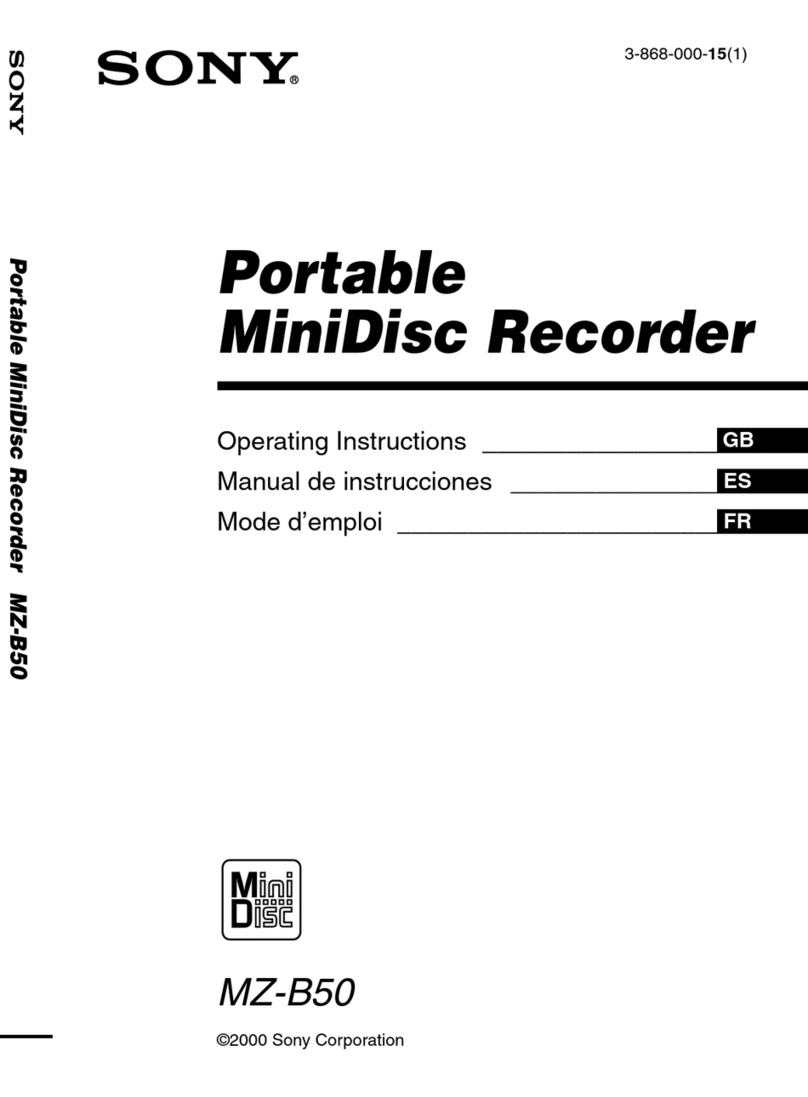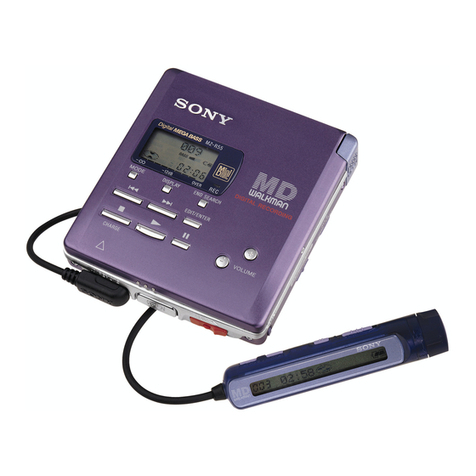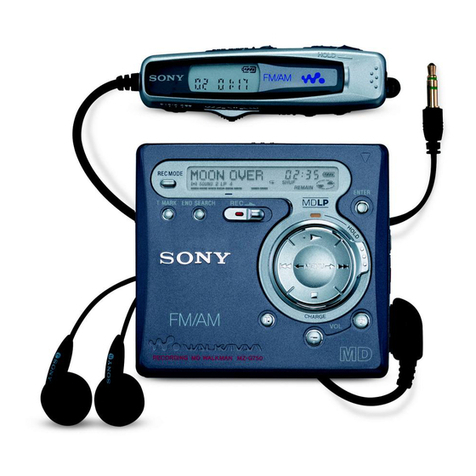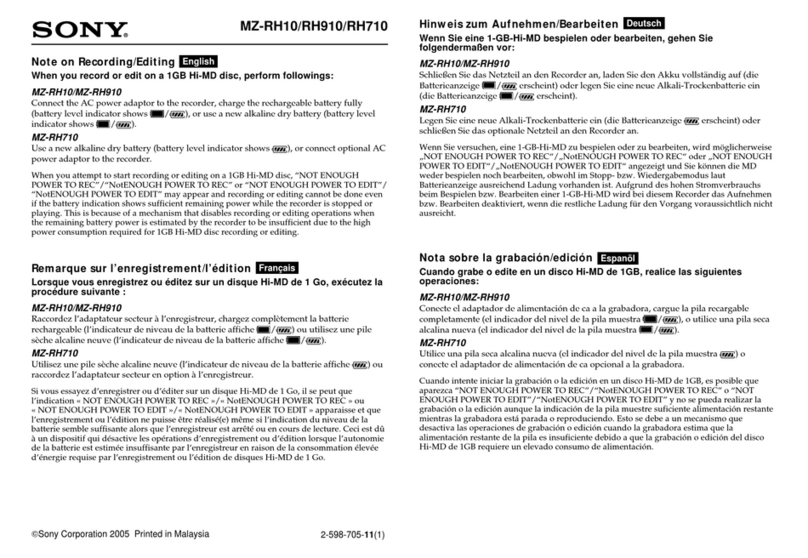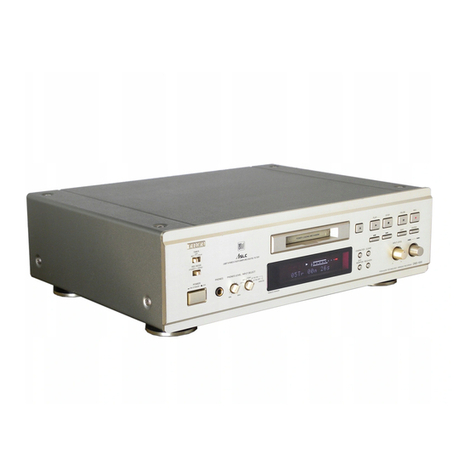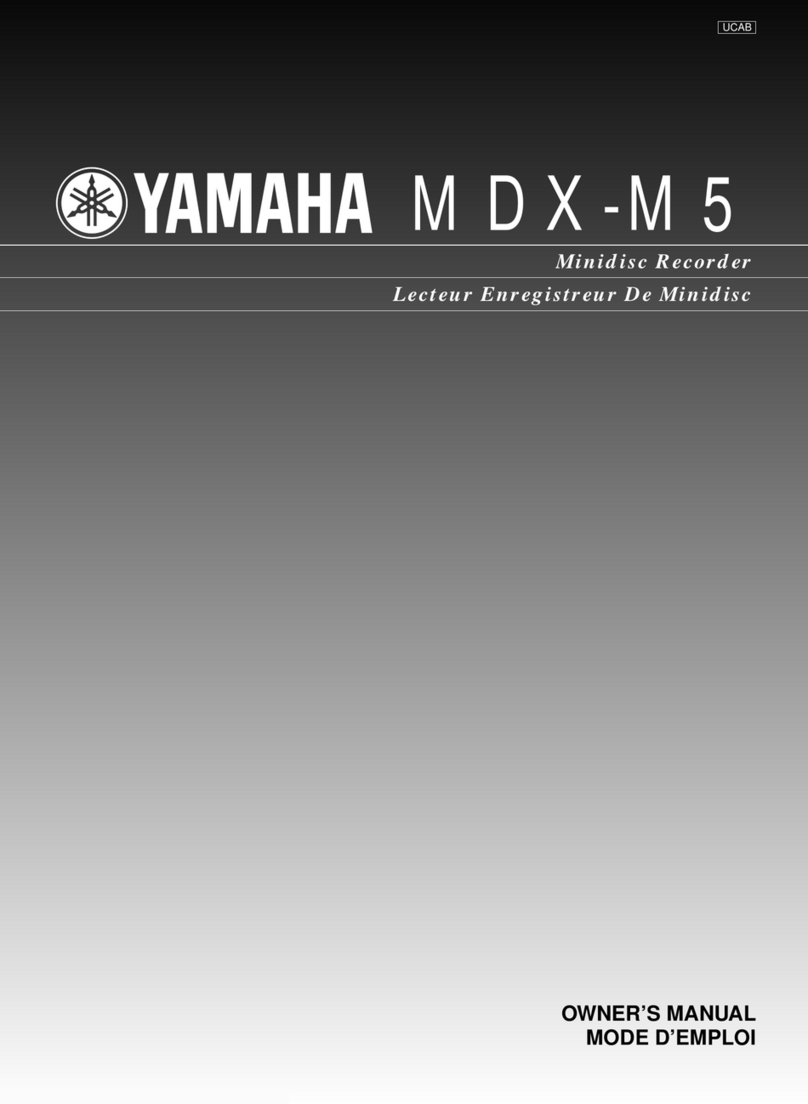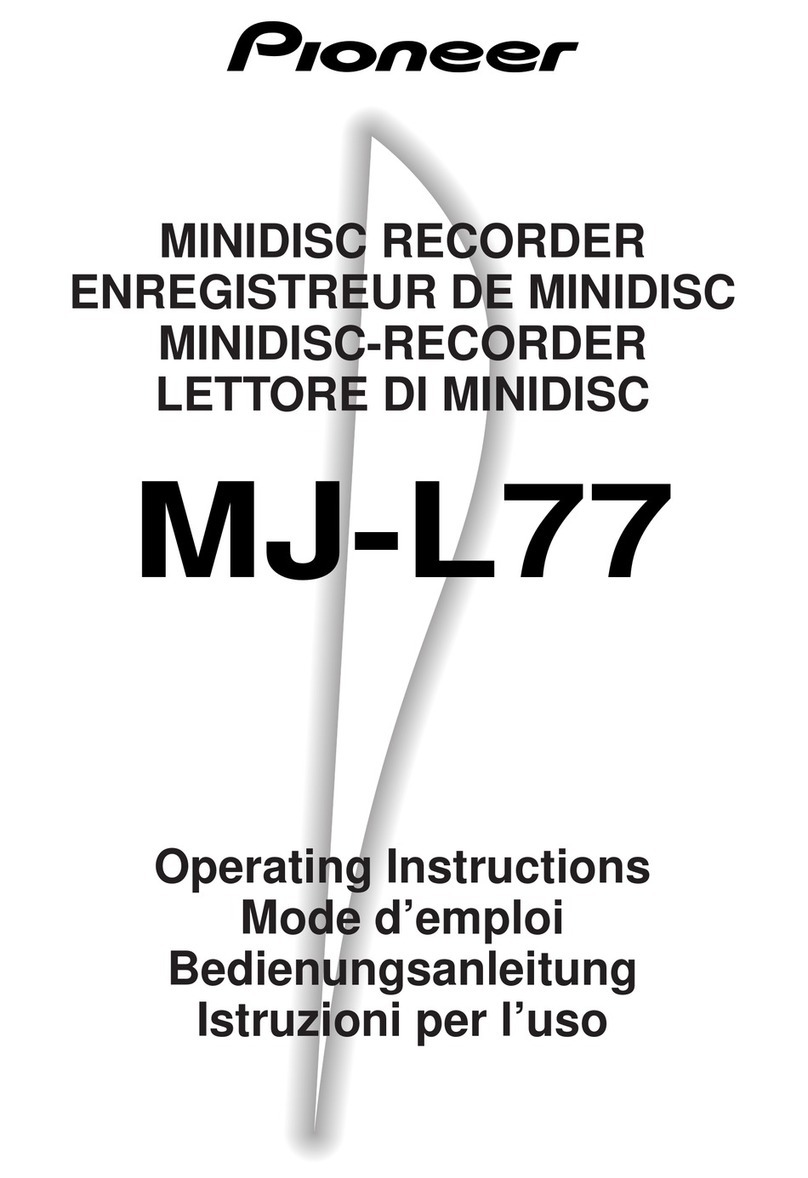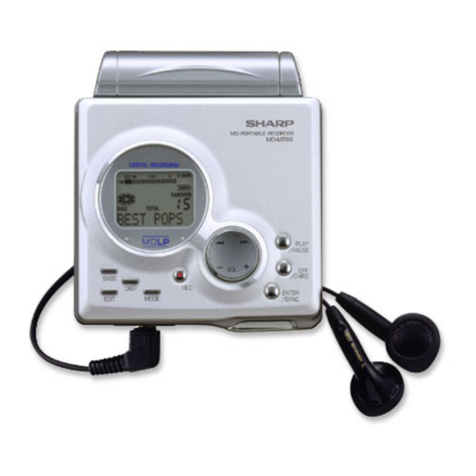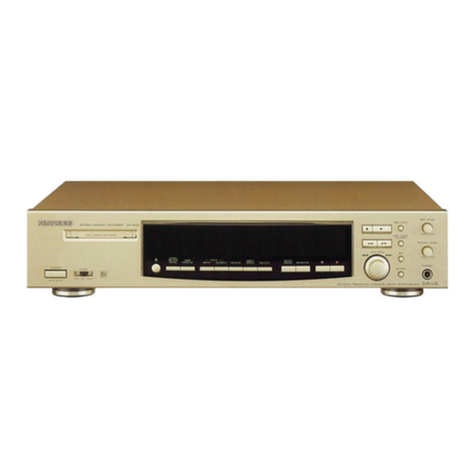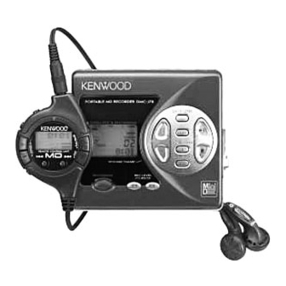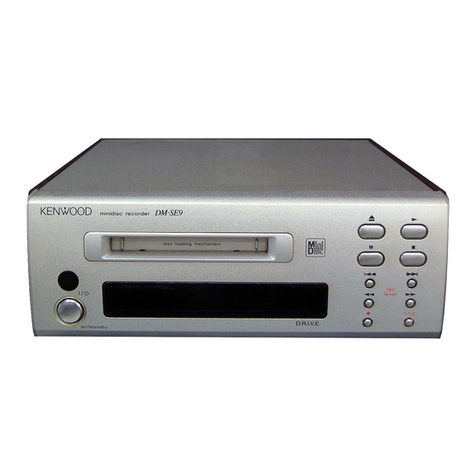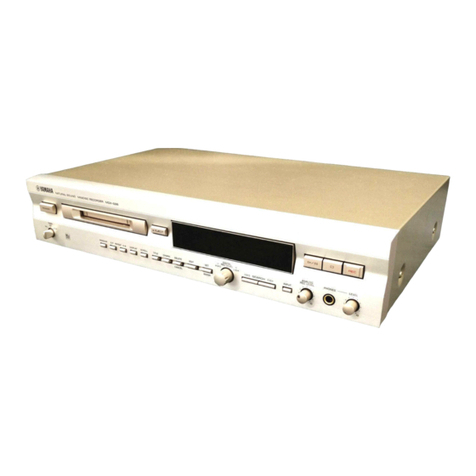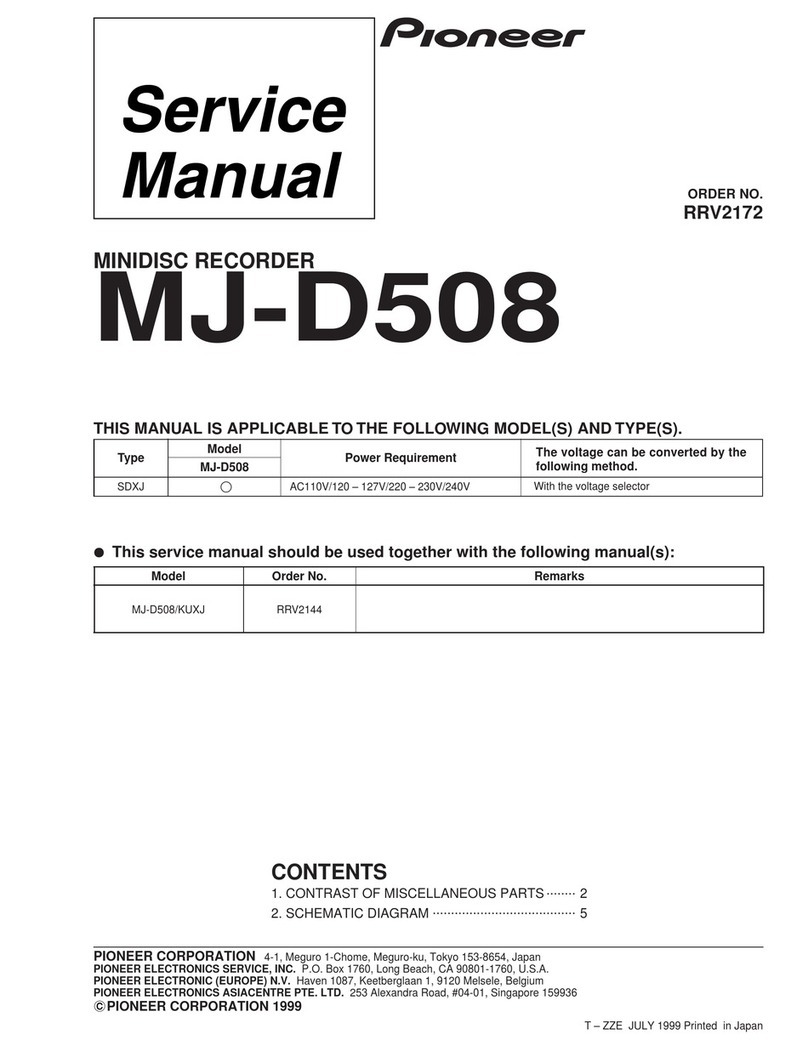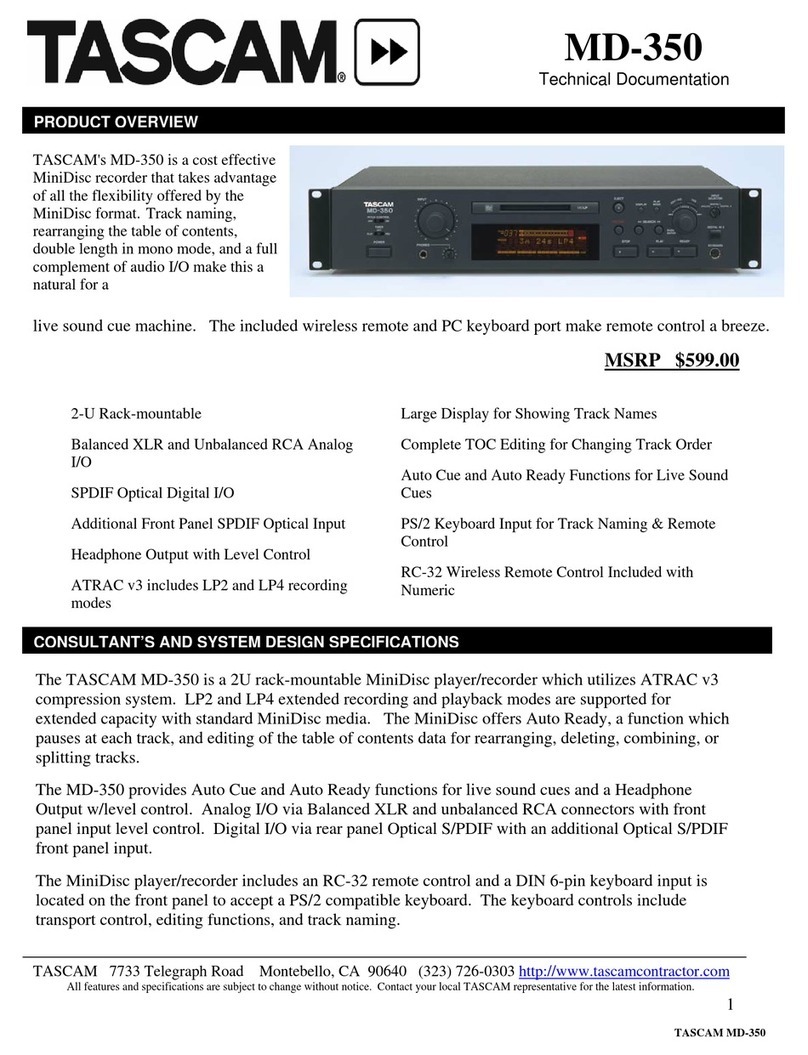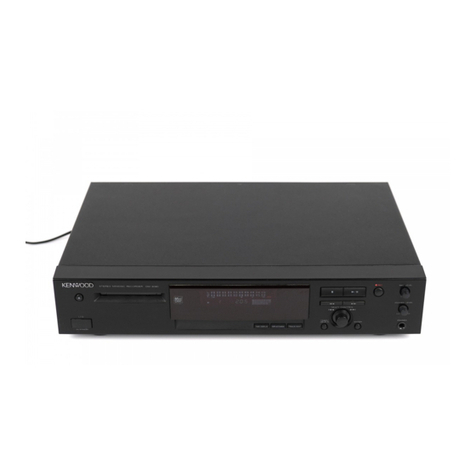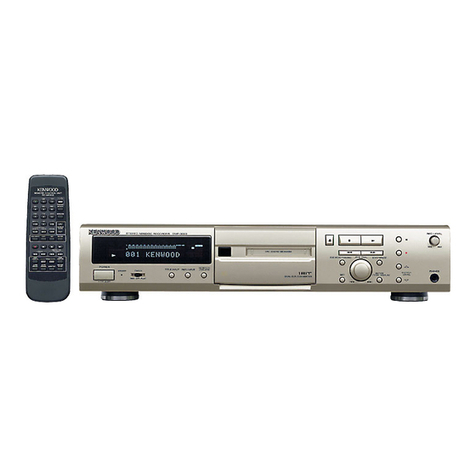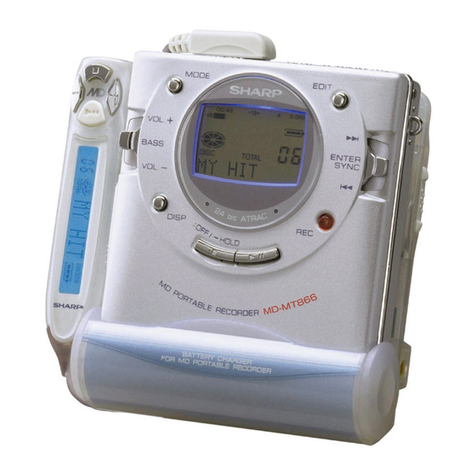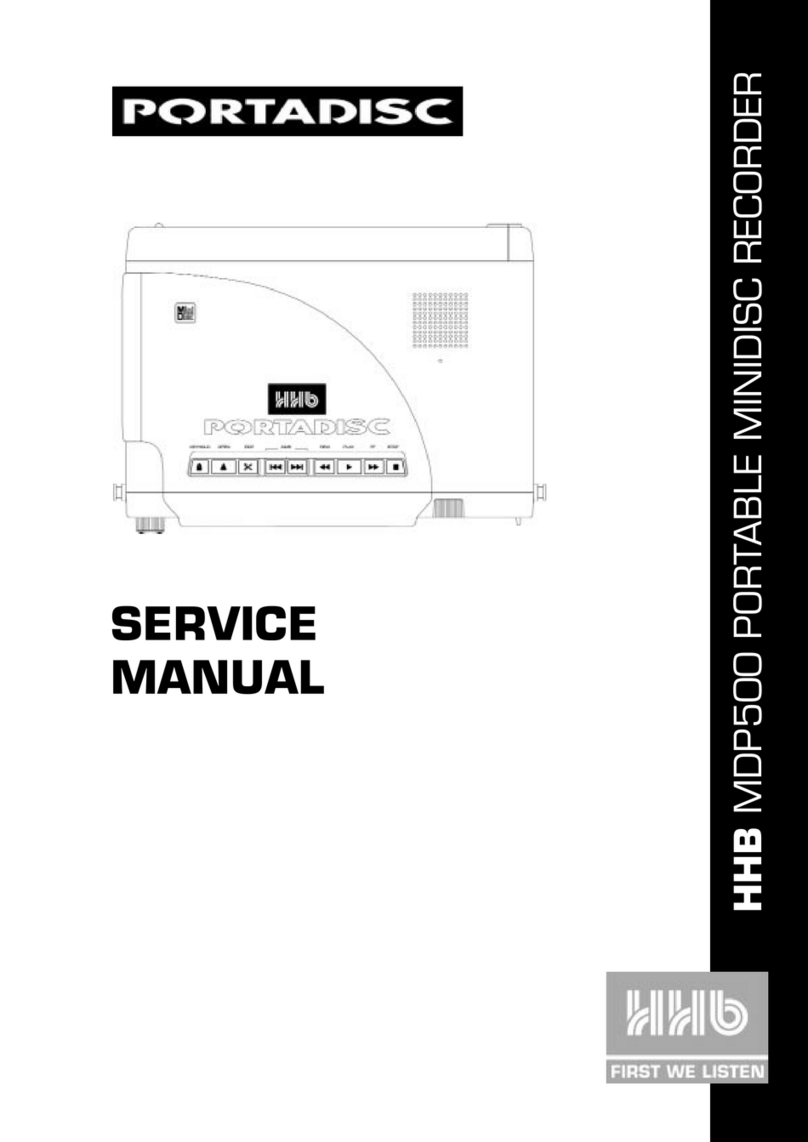3
1. SERVICING NOTE......................................................... 4
2. GENERAL
Looking at the controls ....................................................... 5
3. DISASSEMBLY
3-1. Bottom Panel Assy .............................................................. 6
3-2. Upper Panel Assy ................................................................ 7
3-3. LCD Module ....................................................................... 7
3-4. Main Board ......................................................................... 8
3-5. MD Mechanism Deck .........................................................8
3-6. OP Service Assy.................................................................. 9
3-7. Holder Assy......................................................................... 9
3-8. Motor Flexible Board ........................................................ 10
3-9. DC Motor (M602) .............................................................10
3-10. DC Motor (M601), DC Motor (M603) ............................. 11
4. TEST MODE
4-1. Outline ............................................................................... 12
4-2. Setting Method of Test Mode ............................................ 12
4-3. Operation in Setting the Test Mode................................... 12
4-4. Releasing the Test Mode ................................................... 12
4-5. Configuration of Test Mode .............................................. 13
4-6. Manual Mode .................................................................... 13
4-7. Overall Adjustment Mode ................................................. 14
4-8. Self-diagnosis Result Display Mode ................................. 14
4-9. Result the Error Display Code .......................................... 15
4-10. Sound Skip Check Result Display Mode .......................... 16
4-11. Key Check Mode............................................................... 16
TABLE OF CONTENTS
5. ELECTRICAL ADJUSTMENTS
5-1. Outline ............................................................................... 18
5-2. Precautions for Adjustment ............................................... 18
5-3. Adjustment Sequence ........................................................ 18
5-4. NV Reset ........................................................................... 18
5-5. Power Supply ManualAdjustment.................................... 19
5-6. Temperature Correction..................................................... 20
5-7. Laser Power Check ........................................................... 20
5-8. Overall Adjustment Mode ................................................. 21
6. DIAGRAMS
6-1. IC Pin Descriptions .......................................................... 24
6-2. Block Diagram – Servo Section – ..................................... 31
6-3. Block Diagram – Audio Section – .................................... 32
6-4. Block Diagram – System Control/Power Section – .......... 33
6-5. Printed Wiring Board – Main Section – ............................34
6-6. Schematic Diagram – Main Section (1/3) – ...................... 37
6-7. Schematic Diagram – Main Section (2/3) – ...................... 38
6-8. Schematic Diagram – Main Section (3/3) – ...................... 39
6-9. IC Block Diagrams............................................................ 40
7. EXPLODED VIEWS
7-1. Panel Section ..................................................................... 43
7-2. Chassis Section ................................................................. 44
7-3. MD Mechanism Deck Section ..........................................45
8. ELECTRICAL PARTS LIST...................................... 46
MZ-G755
